Abstract
Fire is a natural and increasingly synthetic process in Argentina, South America, and across the globe, responsible for twice the deaths as other natural disasters. All land catches flames when the air temperature (C°), humidity (%), and wind speed (km/h) are 30. The annual rate at which fire occurs is a fire regime, categorizing land into four states: non-combustible, sporadically combustible, frequently combustible, and regularly combustible due to natural conditions. Despite their destructive potential, natural fires offer ecological benefits, including habitat creation, seedling emergence, biodiversity enhancement, and stream replenishment; and the more frequent the fire, the less kindling it has to ravage a path.
Fires have grown in size and frequency across the globe due to the convergence of climate changes, international displacement, and forest mismanagement. Understanding regimes through environmental data located where fire needs to happen, is coerced to happen, and will never happen. In the context of Cordoba, we sought solutions to reduce the likelihood of fire starting incidentally in informal settlements.
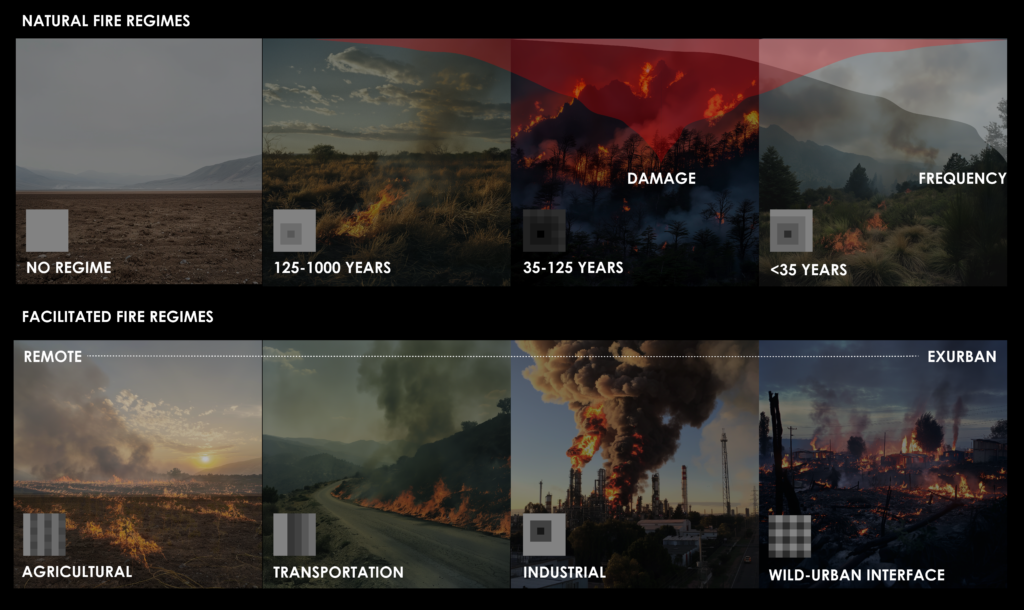
Objective
Looking forward to 2100, our objective was to understand fire as a natural process and pressing risk for the people, land, and economy of Argentina. Regimes and their potential changes locate where fire naturally needs to happen, is coerced to happen, and will never happen.
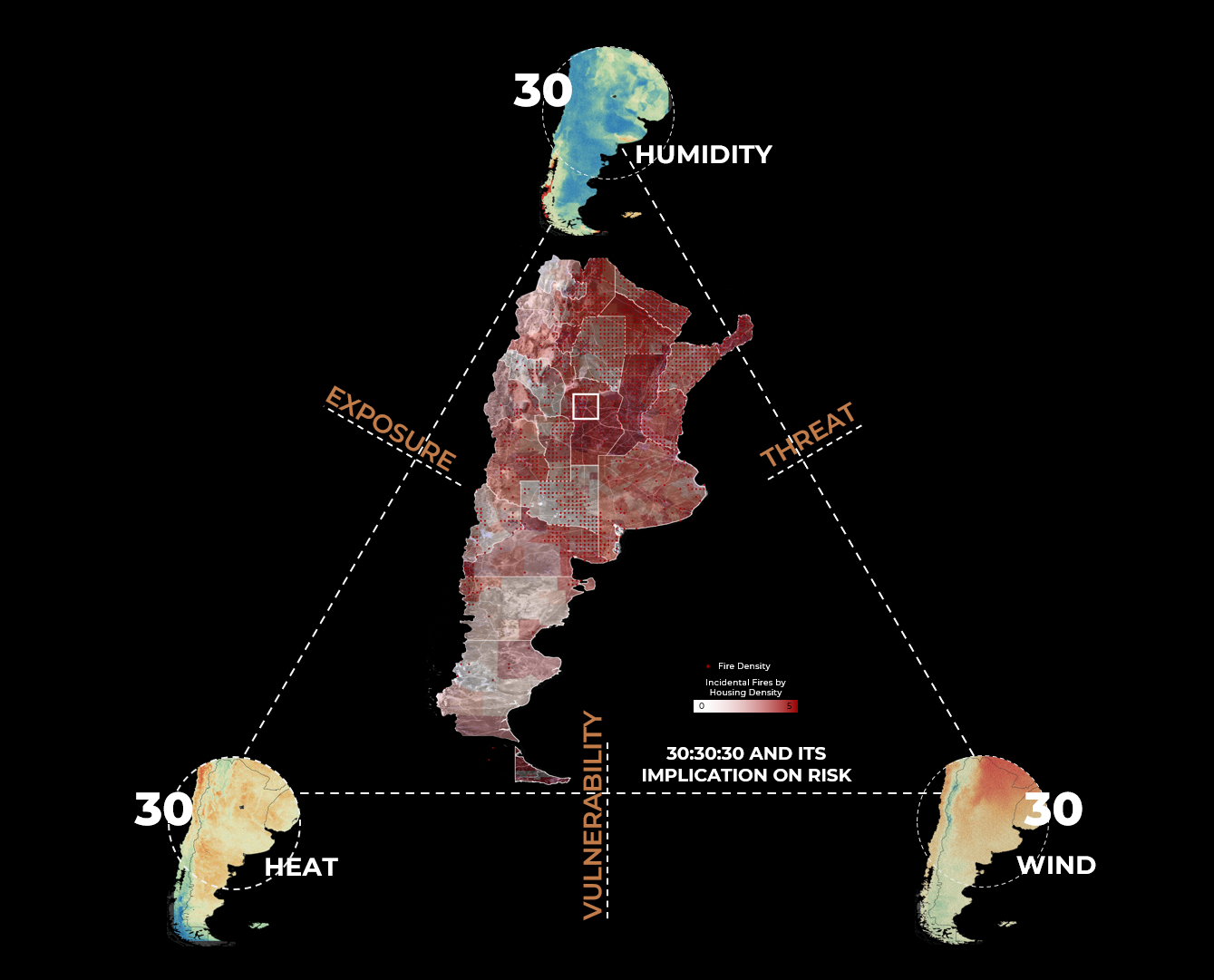
- 30-30-30 Change | Rising temperatures and winds | The proliferation of detrimental fires, unrelated to natural processes, has surged eightfold in the last half-century, resulting in catastrophic consequences for lives, livelihoods, and land value. Environmental shifts, such as El Niño events and escalating temperatures, exacerbate fire frequency, leading to population displacement.
- Inflationary Risk | Runaway inflation, exposed land holdings | Economically, Argentina’s most pressing challenge is their runaway inflation. Prices today are not prices tomorrow and wages cannot catch costs, burdening households with food, housing, and energy insecurity. As a welfare state, Argentina is liable for government spending on public services. Yet, a history of private takings and lack of a stable savings economy, leaves the state responsible for vast public land holdings. This land, be it untapped copper mines or unique habitats, are uninsured by the peso, risking diminished state wealth through land value depletion.
- Migration | Stabilizing population, falling migration | Argentina’s population has grown rapidly over the last 20 years, with over 80 percent of in-migrants from bordering Paraguay, Brazil, Bolivia, and Chile. Converging economic challenges have recently slowed growth and projections indicate the population will begin to decline around 2060. The shifting population density mandates flexibility in residential land use, with forests often the sites of informal settlements, and begs caution in infrastructure design.

Without mortgaging or wealth-building mechanisms for existing and new residents, effective land management strategies, coupled with community fire prevention education, are imperative to mitigate fire-related losses.
Hypothesis
Incidental fires are largely preventable but require engagement with current and future residents of informal settlements and the provision of fire-safe education and toolkits.

Methodology
Continental | Risk without remedy in the Heart of Latin America
Analysis of fires occurring since 2016 across Latin America found Argentina’s northern border to be the nexus of fire. This phenomenon, both natural and induced by human settlement and land management, was assumed to cause force those displaced by fire south to Argentina’s largest cities: Buenos Aires and Cordoba.
Segmentation of fires by cause:
- natural, a due to the land’s 30-30-30 environmental conditions,
- incidental, preventable with a shift in human behavior, and
- intentional, crimes of arson;
revealed Cordoba to be where attribution of causes could be matched to solutions to shift human behavior to de-risk land.
National | Threats converging on the province of Cordoba
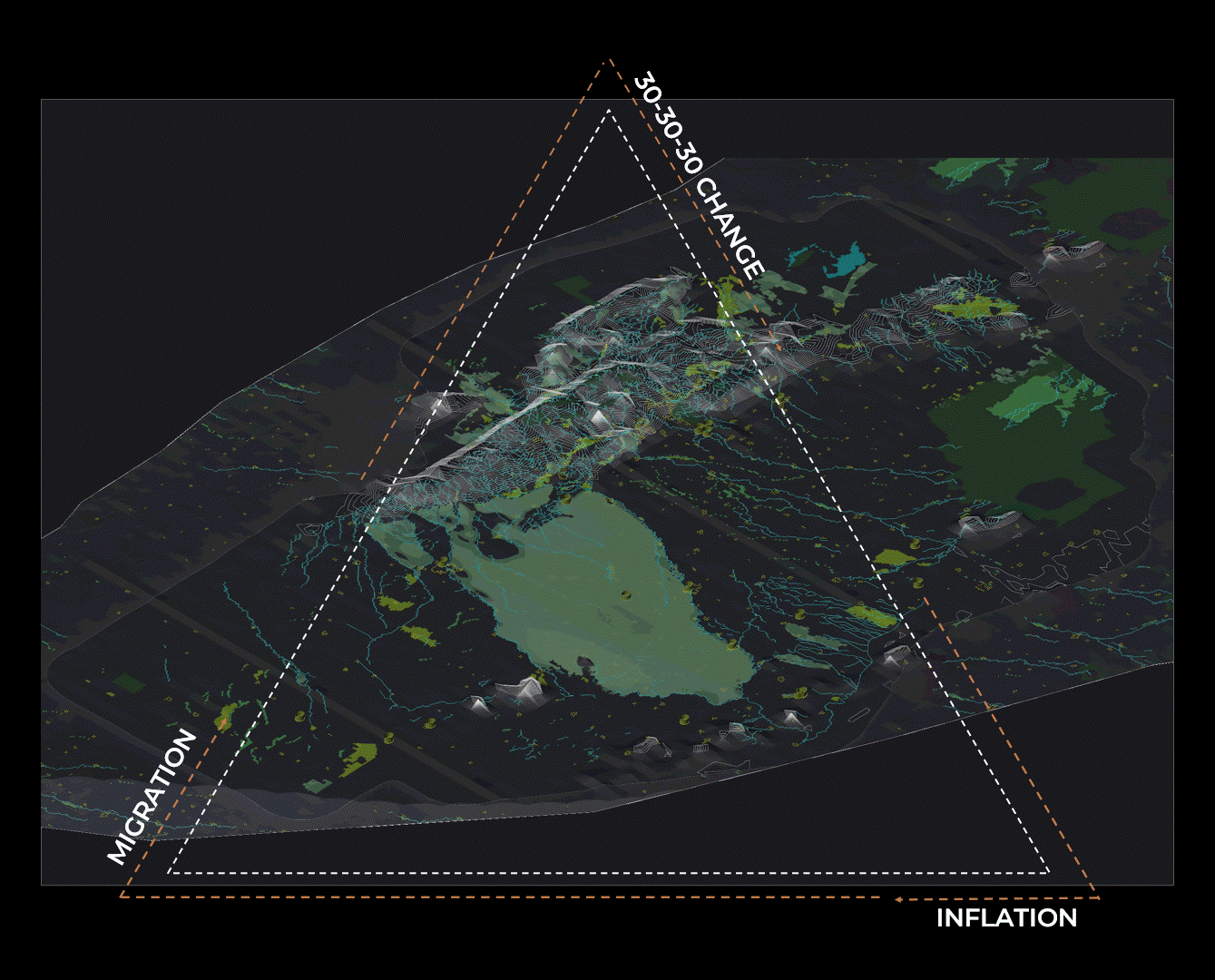
Overcrowded and uninsured housing in Argentina, coupled with concentrated fires along its northern border, facilitate migration, often leading to settlement in fire-prone forest areas. Cordoba, at the nexus of soil organic carbon stores and recent fire patterns, faces heightened risk of incidental, preventable fires. A shift in land management practices is imperative to safeguard Cordoba’s surrounding forest, future settlers, and welfare budget.
Our analysis revealed Cordoba to be specifically vulnerable to synthetic, large fires at where the edge of informal settlements meet wild forest.
- 30-30-30 Change | Mapping temperature increase from 1900 to 2020 revealed north Patagonia and Buenos Aires to be most vulnerable to shifts in fire regimes. Recent large fires have been concentrated in these regions and require further climatic analysis to understand mitigation tactics.
- Inflationary Risk | Segmentation of fires by cause; natural, incidental, and intentional; revealed Cordoba to be where soil organic carbon (SOC) stores intersect with high population density and recent fire patterns.
- Migration | An attraction betweenness analysis of border controls and bus stops along bus routes traveling primary roads revealed Cordoba, Argentina’s second largest city, to be a destination for in-migrants.

Urban | Environmental, social and economic conditions as catalysts for fire
Forest fires are caused by people in extreme poverty who depend on forest resources and whose settlements expand into forested areas. This highlights the need for solutions that address root causes rather than just symptoms.

Fires at the wild-urban interface occur due to incidentally unsafe practices such as:
- Cooking and Heating Practices: Many residents in informal settlements use open fires or basic stoves for cooking and heating. These methods can be unsafe if not properly managed, especially in densely populated areas with highly flammable structures. Sparks or embers can easily ignite nearby materials.
- Electrical Issues: Informal settlements often have makeshift electrical connections that do not comply with safety standards. Overloaded circuits, faulty wiring, and the use of substandard materials can lead to electrical fires.
- Clearing Land by Fire: In some cases, individuals might use fire to clear land for agriculture or to expand their living areas. This practice, known as slash-and-burn agriculture, can lead to uncontrolled wildfires if the fires are not properly managed or occur during dry conditions.
- Waste Burning: Due to inadequate waste management services, residents might resort to burning waste as a means of disposal. This can lead to fires if not carefully controlled, especially in windy or dry conditions.
- Use of Flammable Materials for Construction: Homes in informal settlements are often constructed with readily available, but highly flammable, materials such as wood, plastic, and cardboard. These materials can catch fire quickly and cause rapid spreading within the community.
The potential direct and indirect risks and returns to fire were analyzed to understand what types of fires should occur based on the local land use.
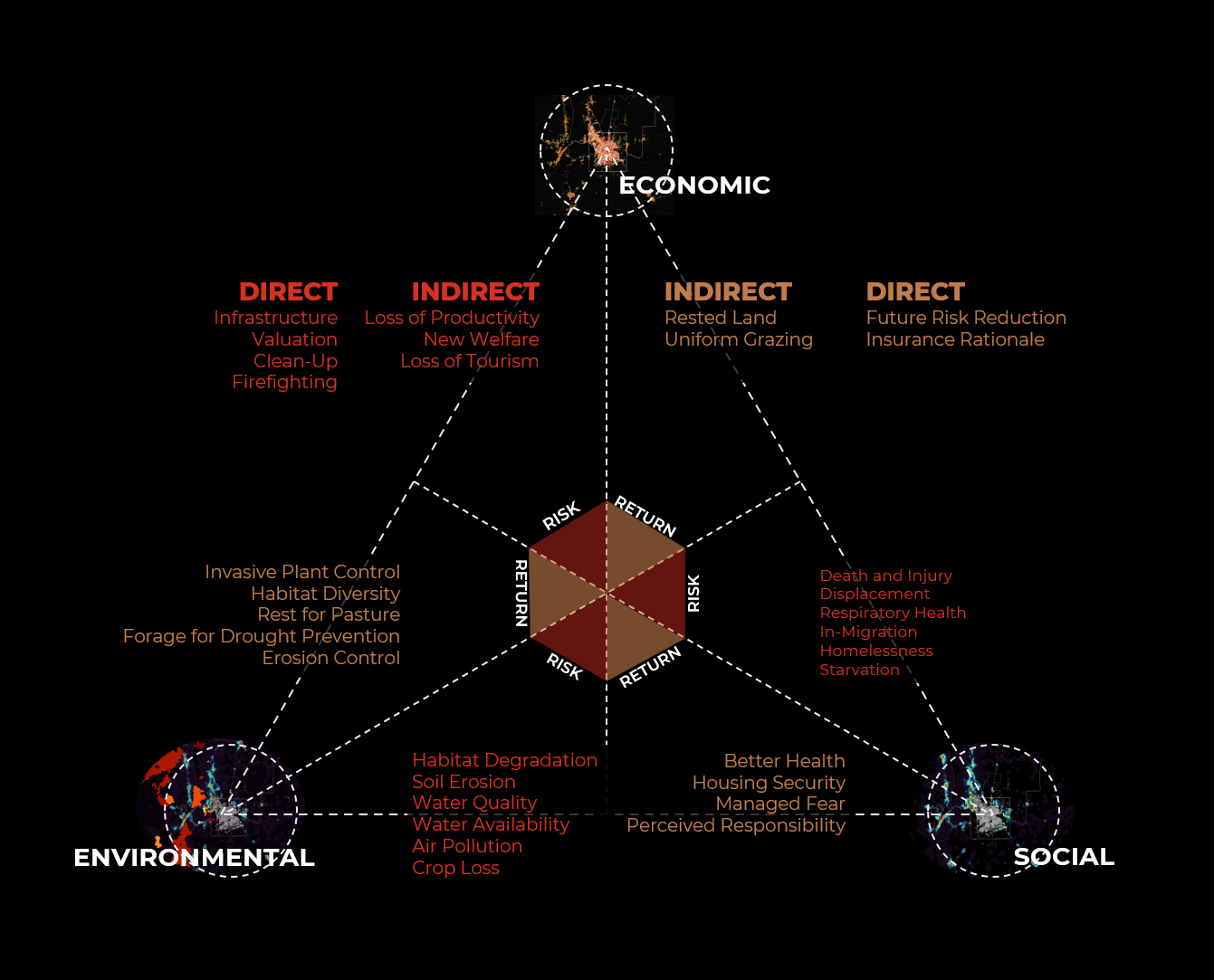
Warmer, drier land conditions danger human and non-human inhabitants.
- Environmental
- Risks | Big fires pose the risk of habitat degradation, soil erosion, water quality and availability, air pollution, and crop loss.
- Returns | Small, controlled fires help control invasive species, diversify habitats, allow rest for farmed pastures, prevent
- Economic
- Risks
- Direct | Damages from fire exact immediate costs. Firefighting, clean-up, lost and new infrastructure, and degraded land value all result in economic losses. Fires in the Corrientes province alone, have burned 785,238 hectares, or 10% of land, resulting in the loss of 63,769 pesos, 2021 base, in rice, citriculture, forestry, yerba mate, and livestock.
- Indirect | Long-term, fire means the loss of land productivity for food and other products, new cases of welfare spending, and loss of revenue from tourism.
- Returns
- Direct | Managing fires reduces the future risk of large fires, providing rationale for land insurers to reduce premiums.
- Indirect | Controlled approaches on agricultural land allow the land time to rest and shape the uniform behavior of grazers.
- Risks
- Social
- Risks | Fires result in the death and injury of its victims. Specifically, incidental fires near forests, may suffer homelessness, temporary displacement, poor respiratory health, and starvation. Again, in Corrientes, raging fires have affected ~10% of the population.
- Returns | The universal nature of this challenge provides education and collaboration opportunities to globally shift behavior towards fire management. Successful implementation may lead to health conditions and housing security; and will both assuage the fear of fire and promote personal responsibility to prevent displacement.
Rising back from the Flames
Settlement | Finding solutions through causal attribution
Causal attribution is the psychological process of identifying reasons behind behaviors and events, focusing on whether causes are internal or external, stable or changeable, and controllable or uncontrollable. This concept significantly influences how individuals interpret situations and react, impacting their emotions and motivation, and is key in shaping interventions in education and counseling.
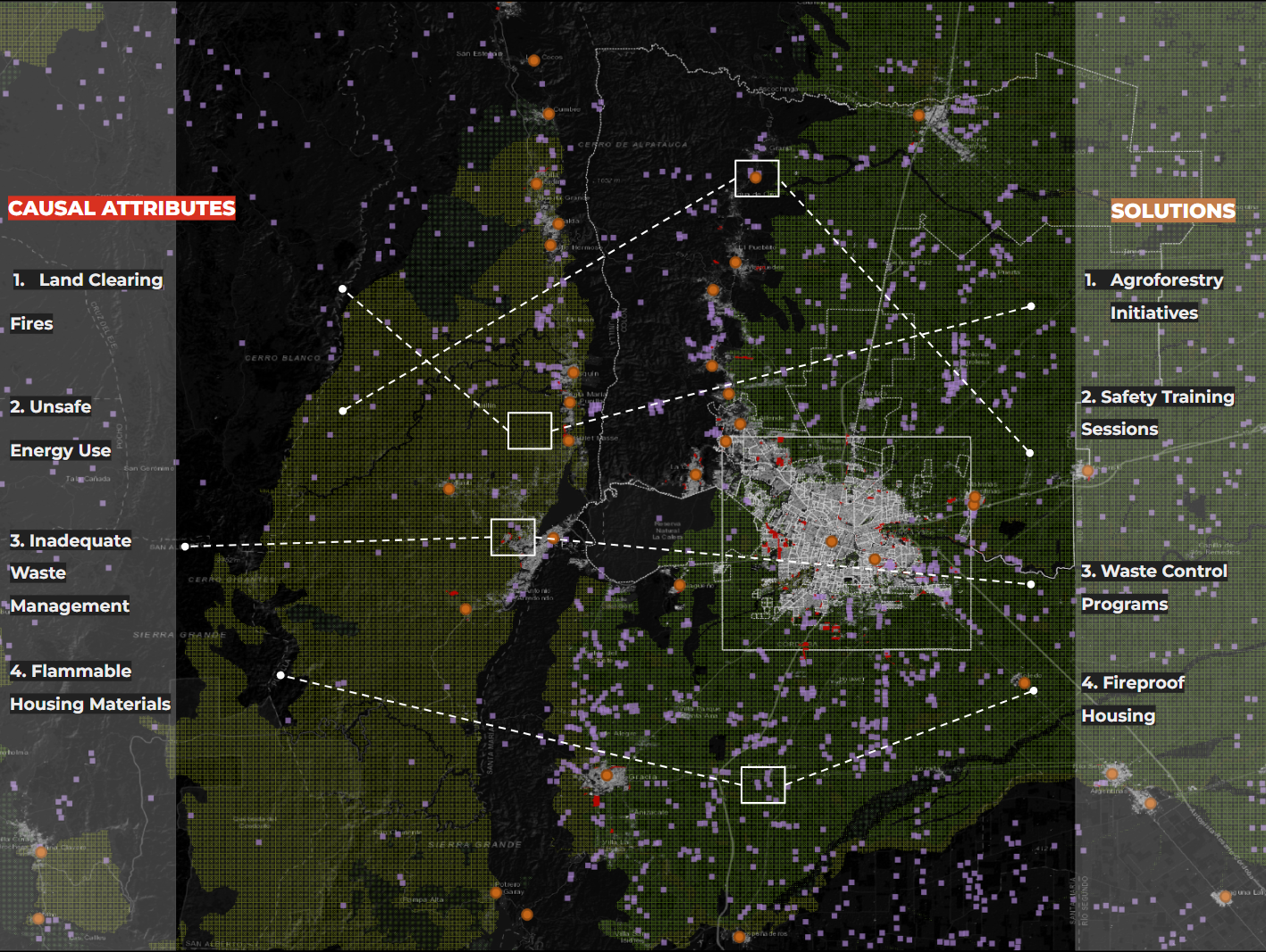
To rise back from the flames, Argentina may attribute the causes of fires to human activities in informal settlements.
1. Lack of Alternative Livelihoods
- Integrated Factor: The use of slash-and-burn techniques for clearing land for agriculture, often a livelihood strategy, can be a significant fire risk in forest areas adjacent to settlements.
- Solution: Implement alternative, sustainable agricultural practices that do not rely on land clearing by fire. Introducing agroforestry and permaculture can provide livelihoods while preserving the forest.
2. Limited Access to Education and Awareness
- Integrated Factor: Inadequate knowledge about safe cooking, heating practices, and the dangers of open flames often leads to accidental fires in informal settlements.
- Solution: Launch community-based education programs that focus on fire safety, the risks associated with unsafe electrical setups, and the benefits of using safer, energy-efficient cooking and heating technologies.
3. Inadequate Land Management and Policy Enforcement
- Integrated Factor: Improper waste management often leads to the burning of garbage, which can escalate to larger fires during dry conditions. Also, poorly regulated electrical connections pose fire risks.
- Solution: Enhance land management and urban planning in and around informal settlements to include regular waste collection and disposal services. Implement strict regulations on electrical wiring and provide access to safe, legal energy sources.
4. Socio-economic Inequality and Marginalization
- Integrated Factor: The construction of homes from flammable materials not only reflects socio-economic deprivation but also significantly increases fire hazards.
- Solution: Develop programs that improve housing conditions by using fire-resistant materials and designs. This can be part of broader efforts to address poverty and marginalization, ensuring communities have access to better resources and infrastructure, reducing the need to rely on risky practices.
National | Matching management to natural regime
On a national scale, the fire management plan, currently divided by region, may look to the natural fire regime of of landforms to recontextualize preparation, management, and building tactics. This conceptual counterplan of fire management practices categorizes landform management by the suitability of tactics:
- drone-assisted ignitions may control burns in remote regions;
- mosaic burning patterns, used for over 3,000 years, may promote diverse habitats in biodiversity hotspots;
- biochar firebreaks along the line of settlement provide two-way protection from the spread of natural and incidental fires; and
- prescribed burns may mitigate large-scale fire risks within and around urban areas.
New building in areas susceptible to fire may utilize:
- Fire-safe materials, be it compressed stabilized earth blocks (CSEBs) or stabilized rammed Earth (SRE) for fire-safe bases or galvanized steel sheets or clay roof tiles to prevent fire travel across spaces.
- Vegetation, native to the region, can reduce flammability, act as a natural barrier, resist fire and drought, or provide fire-resistant groundcover.
- Resources that detect and mitigate fire risk, including air quality monitors, rain barrels, fire resistance kits, and smoke detectors may be made available to residents.
- Design of informal homes with designated cooking areas, vented soffits, and open windows can prevent fire from catching and fire-resistant partitions and exterior walkways between homes can prevent spread.

Conclusion
Fire is a natural process that will not be successfully managed if the goal is elimination. Fire safety is understanding the extent of the risk it poses to the environment and humans over time, by source, and under different solution scenarios. Argentina can implement national strategies to protect national economic and environmental assets at risk of wild flames. At the city scale, Cordoba can mandate fire-safe agricultural and service provision practices through infrastructural changes and education. In informal settlements, fire-resistant materials and vegetation can be made available and local resource centers can provide the resources and design practices that prevent small, incidental fires from destroying communities.
Sources
- Google Earth Engine.
- The European Space Agency.
- Argentina Department of Defense.
- MacroTrends.
- Federal Reserve Economic Data.
- Open Street Maps.
- The European Commission.
- California Department of Forestry and Fire Protection.

